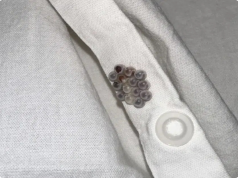Cervical cancer was once one of the leading causes of cancer death among women.
But thanks to Pap smears, HPV vaccines, and increased awareness, it’s now one of the most preventable and treatable cancers — if caught early.
The problem?
In its early stages, cervical cancer often shows no symptoms.
By the time signs appear, the disease may have progressed.
That’s why understanding the unusual, often overlooked warning signs is crucial — especially for women over 30.
While regular screenings are the best defense, your body may also send subtle — but significant — signals.
Here are 8 unusual signs that could indicate cervical cancer — and why you should never ignore them.
🔴 1. Abnormal Vaginal Bleeding
This is the most common early warning sign — but it’s often dismissed as a “weird period.”
Watch for bleeding that occurs:
- After menopause (any bleeding after menopause is abnormal)
- After sexual intercourse
- Between periods
- After a pelvic exam or douching
- Heavier or longer periods than usual
👉 Don’t brush it off.
Even light spotting can be a red flag.
💧 2. Unusual Vaginal Discharge
Vaginal discharge is normal — but changes in color, smell, or consistency can signal trouble.
Cervical cancer may cause discharge that is:
- Watery, pink, or slightly bloody
- Foul-smelling
- Heavy and persistent — even when not on your period
This happens when tumors in the cervix begin to bleed or become infected.
💔 3. Pain or Bleeding After Intercourse
Post-coital bleeding (bleeding after sex) is not normal — and it’s one of the earliest signs of cervical changes.
The cervix may be inflamed, eroded, or have precancerous lesions that bleed easily during contact.
👉 Don’t assume it’s just dryness or a minor tear.
See your doctor for evaluation.
📅 4. Irregular Menstrual Cycles
While occasional cycle changes are normal (especially during stress or perimenopause), sudden, unexplained irregularities can be a concern.
Watch for:
- Periods that come too frequently or too far apart
- Unpredictable flow (very heavy or very light)
- Bleeding that doesn’t follow your usual pattern
These could be signs of hormonal imbalance — or cervical abnormalities.
💩 5. Pelvic or Back Pain
Persistent pain in the pelvis, lower back, or legs — especially if it’s new and doesn’t go away — can be a sign that cervical cancer has spread to nearby tissues or nerves.
Unlike menstrual cramps, this pain:
- Is constant or worsening
- May be one-sided
- Can feel deep, dull, or aching
It’s often mistaken for muscle strain or menstrual pain — but if it lasts more than a few days, get it checked.
🚽 6. Pain or Difficulty Urinating
If the cancer spreads to the bladder or nearby organs, you may experience:
- Pain or burning during urination
- Frequent urination
- Blood in the urine
These symptoms are often mistaken for a UTI — but if antibiotics don’t help, cervical cancer could be the cause.
🍽️ 7. Unexplained Weight Loss and Fatigue
Advanced cervical cancer can cause:
- Sudden, unexplained weight loss
- Extreme fatigue
- Loss of appetite
These are signs that the body is under stress — often due to chronic inflammation or cancer progression.
🩺 8. Swelling in the Legs
If the cancer spreads and blocks lymph flow, it can cause lymphedema — swelling in one or both legs.
This swelling:
- Doesn’t go down overnight
- May feel tight or heavy
- Is often accompanied by skin changes
It’s a late-stage symptom — but early detection can prevent it entirely.
🦠 What Causes Cervical Cancer?
Over 90% of cervical cancer cases are caused by persistent infection with high-risk strains of HPV (Human Papillomavirus) — a common sexually transmitted virus.
Other risk factors:
- Smoking
- Weakened immune system
- Long-term use of oral contraceptives
- Multiple full-term pregnancies
- Family history of cervical cancer
✅ How to Protect Yourself
1. Get Regular Pap Smears & HPV Tests
- Pap smear: Every 3 years (ages 21–65)
- HPV test: Every 5 years (ages 30–65)
- Or co-testing: Both every 5 years
2. Get the HPV Vaccine
- Recommended for girls and boys ages 9–26
- Can be given up to age 45 — talk to your doctor
3. Practice Safe Sex
- Use condoms to reduce HPV risk
- Limit number of sexual partners
4. Don’t Smoke
- Smoking doubles the risk of cervical cancer
5. Know Your Body
- Track your cycle, discharge, and any unusual symptoms
- Report anything abnormal to your doctor — no matter how small
💡 Final Thoughts: Early Detection Saves Lives
Cervical cancer doesn’t have to be a death sentence.
With early detection, it’s highly treatable — and often curable.
But that only works if you listen to your body and attend your screenings.
So if you notice any of these signs — especially abnormal bleeding, unusual discharge, or pain after sex —
👉 Don’t wait. Don’t downplay it.
Make an appointment.
Get tested.
Take control.
Because when it comes to your health, silence is not golden —
Action is.
Your body is speaking. It’s time to listen.










